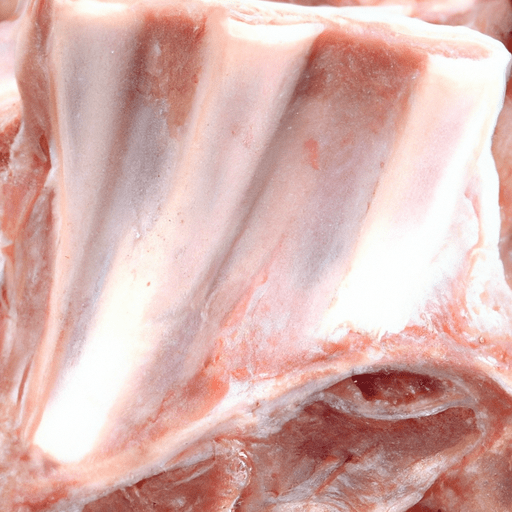Exploring the Delights of Pork Bones in Cooking
When it comes to versatile and flavorful ingredients, pork bones certainly take center stage in the culinary world. Whether you’re looking to elevate your soup, create a rich broth, or enhance the depth of flavor in your dishes, pork bones are a go-to ingredient that deserves some extra attention. In this article, we’ll delve into the tantalizing taste, common uses in cooking, nutritional value, and a few intriguing facts about pork bones.
Taste and Texture
Pork bones offer a mouthwatering taste and a meltingly tender texture. When cooked low and slow, the collagen found in these bones breaks down, resulting in a luscious and gelatinous consistency. This unique texture is what gives soups and stocks that hearty and comforting mouthfeel.
Common Uses
1. Broth and Stocks
One of the primary uses of pork bones in cooking is making flavorful broths and stocks. Simmering the bones with aromatic ingredients like onions, carrots, and herbs infuses the liquid with rich umami flavors. The resulting broth can be used as a base for soups, stews, and sauces, providing an incredible depth of taste to your culinary creations.
2. Soups and Stews
Pork bones add an exquisite flavor to soups and stews. From classic dishes like Japanese tonkotsu ramen to soul-warming bean and ham soup, the presence of pork bones enhances the overall taste and richness of these dishes. The collagen from the bones also gives the soups a velvety consistency that is hard to resist.
3. Flavoring Other Dishes
Pork bones can be used to infuse flavor into a variety of dishes. Adding a few bones while slow-cooking beans or braising meats can elevate the dish to new heights. The bones release their essence into the surrounding ingredients, resulting in a deeply satisfying and complex flavor profile.
Nutritional Value
While pork bones are not consumed directly, they enrich the meals they are used in with important nutrients. Bone broth, made from simmering pork bones, contains collagen, which can support joint health and improve skin elasticity. It also provides essential amino acids, gelatin, and minerals like calcium and magnesium. Including pork bones in your cooking can be a wonderful way to enhance both the taste and nutritional value of your meals.
Fascinating Facts
1. History of Use
Pork bones have been valued in cooking for centuries. In traditional Asian cuisines, pork bones have long been cherished as the secret ingredient to achieving depth of flavor. Historic recipes from China, Japan, and Korea feature pork bones as the foundation of their renowned broths and stocks.
2. Cultural Significance
In some cultures, particularly during festive occasions and family gatherings, sharing a hot pot or soup made with pork bones is a symbol of togetherness and abundance. It brings people together to enjoy the nourishing and comforting benefits of a flavorful meal.
3. Sustainability
Using pork bones in cooking promotes sustainability and reduces food waste. By utilizing every part of the animal, we honor the animal’s life and make the most of its resources.
So next time you’re seeking to add richness, flavor, and depth to your culinary creations, consider incorporating pork bones into your recipes. From soul-soothing soups to complex broths, these bones are an iconic ingredient that will take your cooking to new heights. Embrace the tradition, explore the flavors, and let your taste buds revel in the delights of pork bones. Happy cooking!
Note: Remember to discard the bones before serving the final dish, as they are meant for flavoring and not meant to be consumed directly.
Interesting facts about pork bones:
Origin: Pork bones come from domestic pigs, which are descended from wild boars. Pigs were first domesticated around 9,000-10,000 years ago in Southeast Asia and have been widely consumed and cultivated ever since.
Common uses: Pork bones are commonly used to add flavor, texture, and richness to various dishes. They are commonly used in making broths, stocks, soups, stews, and sauces. The collagen-rich bones also lend themselves well to making gelatin or for slow cooking dishes like braised pork.
Nutritional benefits: Pork bones are a good source of essential nutrients, such as protein, vitamins, and minerals. They are particularly rich in gelatin, which contains amino acids that support gut health, joint health, and skin health. Additionally, they provide minerals like calcium and phosphorus, which are important for bone health.
Unique properties: Pork bones contain collagen, a protein that turns into gelatin when simmered for an extended period of time. The gelatin is what gives pork bone broths their rich, silky texture. Collagen also provides a variety of culinary and health benefits, including adding body to sauces and improving skin elasticity.
Historical significance: Pork bones have been used in traditional cuisines around the world for centuries. In Chinese cuisine, bone-in cuts like the pork knuckles are used in various dishes, such as soups, stews, and braises. In Western cuisines, pork bones are a key ingredient in classic stocks and broths, adding depth and complexity to many traditional recipes. Throughout history, pork, including the bones, has been a staple in many cultures due to its availability and versatility in cooking.




Use the share button below if you liked it.
It makes me smile, when I see it.